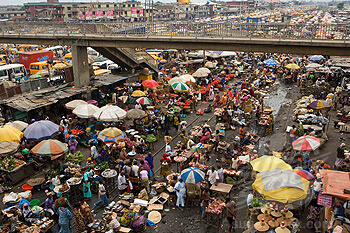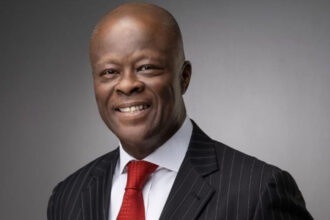
Among the areas crucially needed to be addressed as early as possible include the housing needs, education sector, food and security.
“Lagos is going to witness serious urbanisation problems, with certainty that housing needs will be hugely increased and with little or no prospect of bridging the deficit.
“Accompanying housing demands and inadequate supply is increase in slum with its concomitant effects on safety of lives and propert. This is owing to the fact that the expected growth in the projected population would accommodate jobless youths which with all probabilities, would be a catalysts to criminal activities,” said Dr Joseph Adeniyi, a Sociologist, living in Suru-Lere.
Aside from accommodation problem, the greatest threats to the increased population of Lagos is going to be transportation problem, except government is able to pursue the new transportation plans to its logical conclusion.
“One is of the view that the integration transport system embarked upon by the Lagos government is passionately pursued and completed.
“There is no short-cut to easing transportation in Lagos than the completion of the rail projects. Road transportation will never solve problem of commuting in Lagos, except Water and Rail transportation systems,” said a transportation expert, Mr Tosin Adedoyin, who is based in Norway.
He alluded to the topography of Lagos, as a well endowed state surrounded by friendly water, devoid of tidal waves.”
Researchers’ prediction was that in 2030, Lagos, Cairo and Kinshasa will each have to cater for over 20 million people, while Luanda, Dar es Salaam and Johannesburg will have crossed the 10 million mark.
According to the report, by 2035, close to 30 million people could live in Lagos alone, turning Nigeria’s commercial hub centre into the largest megacity on the continent.
While Africa’s cities are growing rapidly in population, they are developing informally as current urban planning has proven to be ineffective, and private development is often deterred by opaque or inappropriate regulations.
When it comes to investments in infrastructure, industrial and commercial structures, and affordable formal housing, African cities have, until now, failed to keep pace with the concentration of people. In Dar es Salaam, 28 per cent of residents live at least three to a room; in Abidjan, that number rises to 50 per cent; And in Lagos, Nigeria, two out of three people dwell in slums.
The World Bank’s African Cities report has also found that in cities like Antananarivo, Madagascar; Brazzaville, the Republic of the Congo; and Harare, Zimbabwe, non-contiguous built-up areas are scattered throughout the centre, with more than 30 per cent of land within five kilometres of the city centre still left un-built.
In Ghana, buying land has often proved difficult when people often try and sell land that may not even be theirs. Others even end up building on land thinking they own it; only to find out when they need a loan that the land is not theirs.
“With the inevitable population growth, African cities have an exciting opportunity to embrace technology to leapfrog ahead of the world in terms of affordable services and smart cities.
“Through adopting innovative technologies such as block chain and AI, there is the potential to uplift millions of people into prosperity and the formal economy” comments Daniel Bloch, Co-founder, BenBen.
“The problem of rapid urbanisation, especially, in places like Lagos, is a daunting one that requires developers and their professional teams to think more systemically.
“We still find too many examples of Western products, systems and technology been implemented in Africa that is not appropriate for our conditions. We need to ensure that whatever we implement has an Afrikan lens applied to it. We need to have empathy and place our people at the centre of everything we do. We call this Afrikan design innovation.” Abbas Jamie, Director Innovation and Transformation Aurecon Africa Over the next 20 years, the rapid growth of Africa’s urban populations is expected to thrust new demand for infrastructure, housing and other physical structures, and amenities. To meet this new demand, city leaders and planners need adaptable strategies.
“As Africa faces a new reality, we must accept that the continent cannot move forward without proper discussions around the planning, infrastructure and urban development requirements of African cities in order for them to thrive and grow. New to the API Summit & Expo 2017, the Future Cities Africa sub-conference will take an in depth look into how African Cities can better open its doors to the world while creating more economically dense and inclusive urban areas,” says Kfir Rusin, Managing Director for API.
“In order for African cities to bridge the economic, socio-political gaps they currently face, we need to pay special focus on how we can create sustainable, connected cities. Without them, Africa’s growth and development will remain sluggish, and uncertain. The answers to these key issues will not only help to develop Africa’s future cities, but will ultimately have a positive influence on the growth of the real estate market for the rest of the continent,” Rusin concludes.








